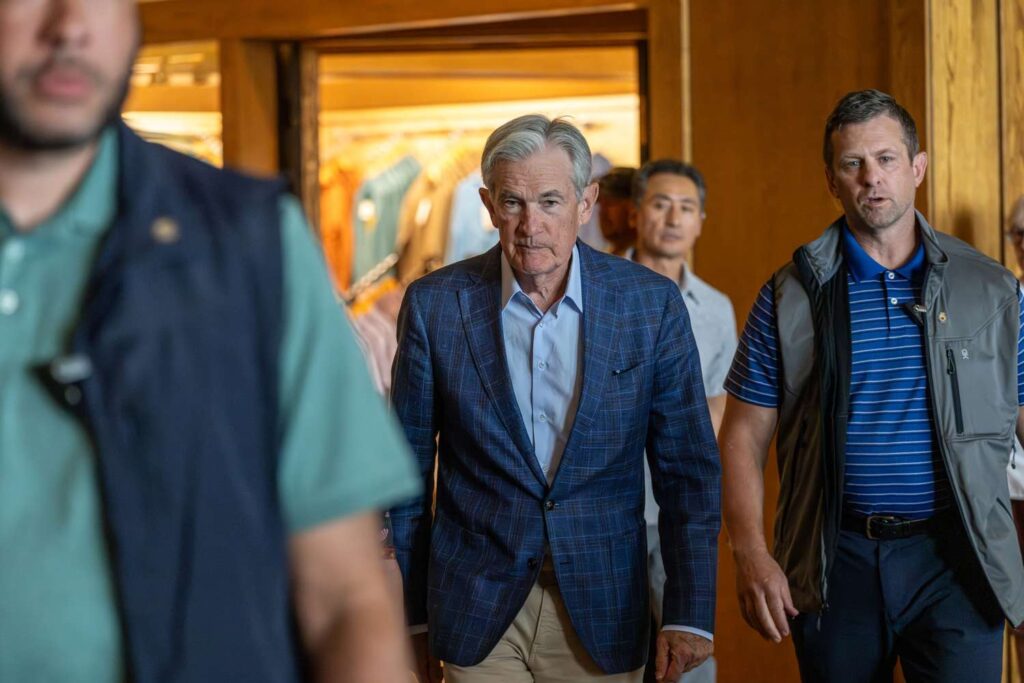:max_bytes(150000):strip_icc():format(jpeg)/GettyImages-2230564930-ebb3c05b560f483dbf3fb9e33bb2414a.jpg)
Key Takeaways
- Federal Reserve Chair Jerome Powell opened the door for the central bank to cut interest rates in September, but stopped short of indicating it’s a sure thing.
- With risks of a job market downturn rising, central bank policymakers “may warrant adjusting our policy stance,” Powell said in a major policy speech in Jackson Hole, Wyoming.
- The Fed has kept rates high to fight inflation, which is still rising further from the Fed’s goal of a 2% annual rate, but Powell said the risks to the job market may require the Fed to cut rates anyway.
Lower interest rates are looking a lot more likely, though still not a sure thing.
Federal Reserve Chair Jerome Powell said the central bank may cut the federal funds rate when its policy committee next meets in September. The growing risks of a serious job market downturn may require the Federal Reserve to change its current monetary policy, which has kept rates high to discourage borrowing and fight inflation, Powell said speaking in a major policy address at the Jackson Hole economic symposium Friday.
“With policy in restrictive territory, the baseline outlook and the shifting balance of risks may warrant adjusting our policy stance,” Powell said.
Powell’s highly anticipated speech focused on how President Donald Trump’s trade wars, especially his sweeping import taxes, are affecting the economy and setting back the Fed on both sides of its “dual mandate” to keep inflation low and employment high. Powell highlighted recent data showing employers are cutting back on hiring due to the tariffs, a trend that could easily sour into mass layoffs.
“Overall, while the labor market appears to be in balance, it is a curious kind of balance that results from a marked slowing in both the supply of and demand for workers,” Powell said. “This unusual situation suggests that downside risks to employment are rising. And if those risks materialize, they can do so quickly in the form of sharply higher layoffs and rising unemployment.”
At the same time, Powell noted the tariffs are pushing up prices. That could be a short-lived trend, but could also set off a bout of high inflation at a time when prices are still increasing faster than the Fed’s target of a 2% annual rate, Powell said.
“The upward pressure on prices from tariffs could spur a more lasting inflation dynamic, and that is a risk to be assessed and managed,” he said.
However, Powell said the weak job market made it unlikely that the tariffs would set off an inflation spiral in which workers kept demanding higher wages to keep up with increasing living costs, like what happened in the 1970s.
Powell acknowledged the difficulty the Fed faces in setting monetary policy at a time when its “dual mandate” is pulling it in opposite directions: high inflation typically requires the Fed to keep interest rates high, while a job market slowdown would push it to lower rates. The fed funds rate influences interest rates on all kinds of loans.
“In the near term, risks to inflation are tilted to the upside, and risks to employment to the downside—a challenging situation. When our goals are in tension like this, our framework calls for us to balance both sides of our dual mandate,” Powell said.
Financial markets interpreted Powell’s speech as opening the door to cutting interest rates in September. Investors were pricing in a 91.5% chance of a September rate cut after Powell’s speech, up from 75% the day before, according to the CME Group’s FedWatch tool, which forecasts rate movements based on fed funds futures trading data.
“Fed Chair Powell’s comments at Jackson Hole were more dovish than we and markets were expecting,” wrote Bank of America Securities analysts.
Update, Aug. 23, 2025: This article has been updated to include analyst comments.


